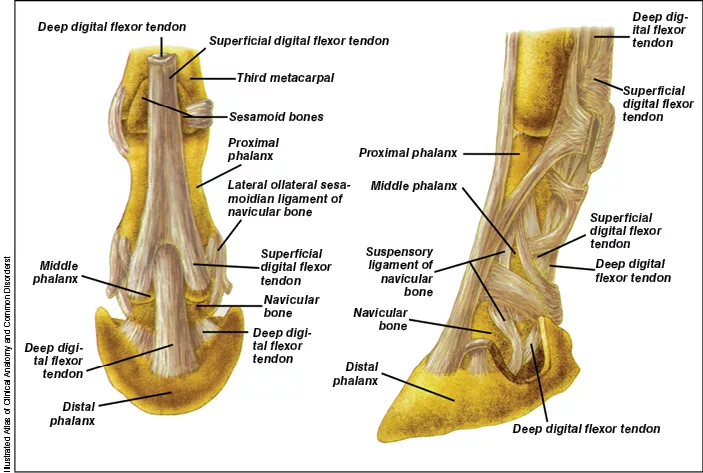American Farriers Journal
American Farriers Journal is the “hands-on” magazine for professional farriers, equine veterinarians and horse care product and service buyers.

The palmar digital nerve block has long been used to detect lameness in the back half of the foot — commonly identified as “palmar foot pain.”
“For years, veterinarians thought that nerve block only blocked the back half of the horse’s foot — the palmar area,” explains Scott Pleasant, a veterinarian and farrier at Virginia-Maryland College of Veterinary Medicine. “Recent research shows it is blocking the entire foot, so it isn’t specific.”
Some lameness conditions that will improve from a palmar nerve block include navicular disease, injury to a specific component to the navicular apparatus, inflammation of the distal interphalangeal joint and osteoarthritis of the distal interphalangeal joint, P3 fractures and laminar bruising, among others.
“We can still focus on lamenesses on the back half of the foot,” he says. “It just isn’t as easy to recognize right away as we used to think.”
Looking at palmar foot pain, Pleasant targeted navicular disease directly in a presentation to veterinarians and farriers gathered at the University of Tennessee’s Equine Podiatry Conference. His survey examined the causes and diagnosis of problems association with the navicular area.
Navicular disease is a chronic, progressive degenerative condition that affects one or more of the components of the navicular apparatus, which includes the navicular bone, navicular bursa, deep digital flexor tendon and navicular ligaments. Usually, the condition will include more than one part of the apparatus.
Pleasant explains that it is a very common cause of lameness, with research indicating that navicular…